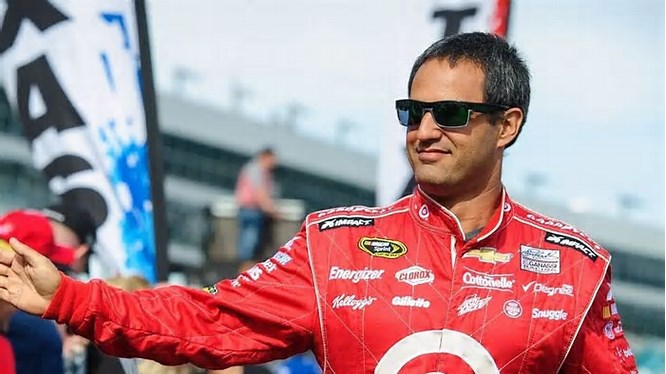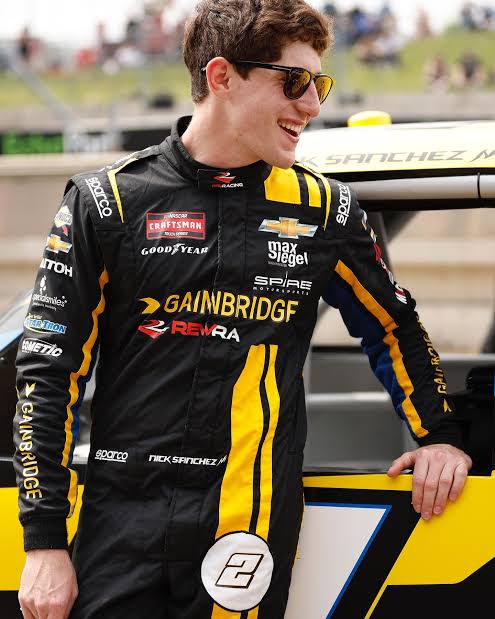In the world of motorsports, few drivers have a resume as diverse as Juan Pablo Montoya. From Formula 1 to IndyCar, and even NASCAR, Montoya has experienced success at the highest levels of multiple racing disciplines. With such a wealth of experience, his opinion on racing matters carries significant weight. That’s why, when Montoya expressed optimism about NASCAR’s Next-Gen car, fans and industry insiders alike paid attention.
Initially, Montoya was excited about the Next-Gen car when NASCAR announced its development. The car promised innovation, cost efficiency, and a more competitive playing field for all teams. As part of a broader push to modernize the sport, the Next-Gen car was designed to incorporate new features, such as a lower profile, wider tires, independent rear suspension, and a standardized chassis. These changes were intended to make the competition tighter by reducing the advantage of larger, more well-funded teams. For Montoya, who has always advocated for evolution in motorsports, this seemed like a step forward. He was optimistic that the car would bring a new level of excitement to the sport, attracting more fans and leveling the playing field for smaller teams.
However, the on-track realities of the Next-Gen car have begun to dampen Montoya’s initial hope. While the car has delivered on some of its promises, such as cost reduction and more parity among teams, several performance and safety issues have left Montoya and other drivers frustrated. One of the main concerns is the car’s handling and stability, particularly at high speeds and on certain tracks. Montoya has commented that the car feels “less forgiving” than its predecessors, with stiffer suspension and an increased reliance on aerodynamics. This has made it more difficult for drivers to maintain control, especially on shorter tracks where handling is critical. As a result, there has been an increase in on-track incidents and accidents, which has raised questions about the car’s overall design.
Another issue that has impacted Montoya’s view is the safety of the Next-Gen car. Several drivers have reported that crashes in the new car feel more severe than they did in previous models. Some have even gone as far as to say that impacts seem harder in the Next-Gen car, which has led to increased concern over driver safety. Although NASCAR has made adjustments to address these concerns, Montoya believes more can be done to ensure the safety of drivers in future races. For someone with his experience across various racing series, safety is a paramount concern, and seeing these issues persist has been disheartening.
Beyond handling and safety concerns, Montoya’s initial enthusiasm for the competitive parity the Next-Gen car was supposed to bring has also waned. While the standardized chassis and components have succeeded in reducing the performance gap between teams, Montoya argues that it has come with unintended consequences. The reduced variability in car setups has left teams with fewer options for tweaking and adjusting their cars to gain an edge. Montoya has pointed out that this has created a more homogenized racing experience, where strategy and innovation play a smaller role than they once did. For Montoya, part of the excitement of NASCAR was in the diverse strategies teams could employ, and the Next-Gen car has, in his view, taken some of that away. The standardization, though effective in evening out the competition, has stifled the creativity and ingenuity that made NASCAR races so unique.
Despite these setbacks, Montoya has not completely given up hope on the Next-Gen car. He understands that any major overhaul in racing is bound to come with challenges, and he remains hopeful that NASCAR can address the car’s shortcomings in the future. He believes that with the right adjustments, particularly in terms of handling and safety, the Next-Gen car could still live up to its potential and bring a new era of excitement to NASCAR.
For now, however, his initial optimism has been replaced with skepticism. The promise of the Next-Gen car has not been fully realized, and Montoya’s hopes for its success have been tempered by its flaws. His journey from excitement to disappointment mirrors the broader reaction of many in the NASCAR community, where the Next-Gen car remains a subject of debate. As NASCAR continues to refine and develop the car, Montoya and others will be watching closely to see if the changes they hoped for will materialize, or if the Next-Gen car will ultimately fall short of its lofty expectations.
Montoya’s story reflects the broader uncertainty that still surrounds the Next-Gen car. While its debut brought high hopes, the realities of racing have revealed a number of areas where improvements are still needed. Whether NASCAR can make the necessary adjustments to meet those expectations remains to be seen, but for now, Montoya’s faith in the car has been shaken. Only time will tell if his shattered hopes can be restored.
Juan Pablo Montoya’s Hope on NASCAR’s Next-Gen Car Gets Shattered




